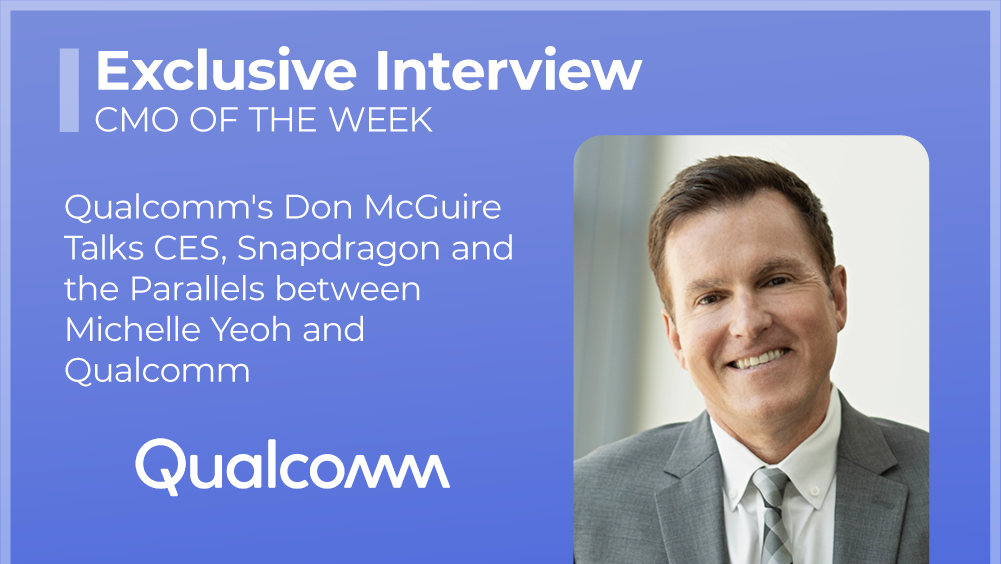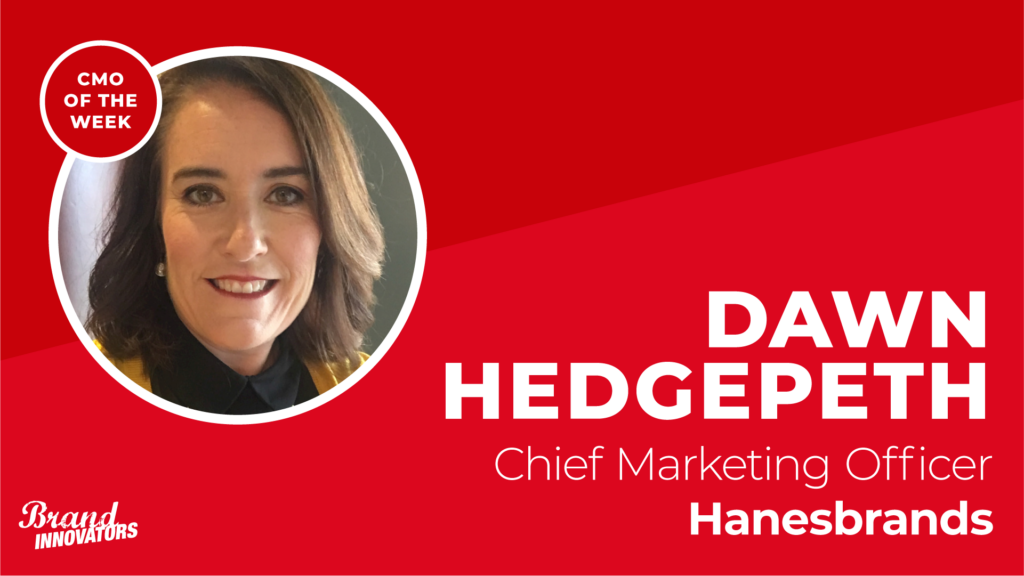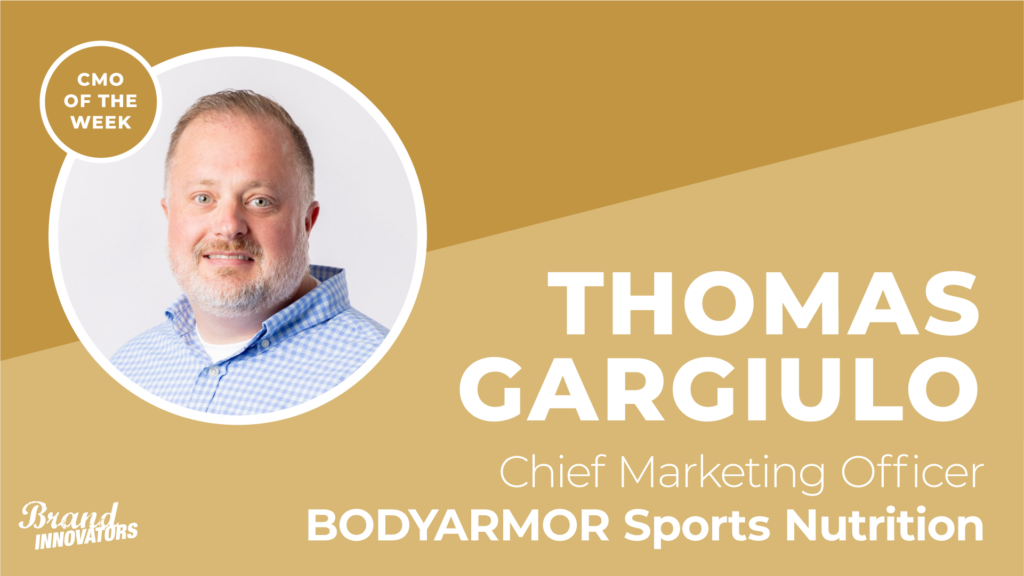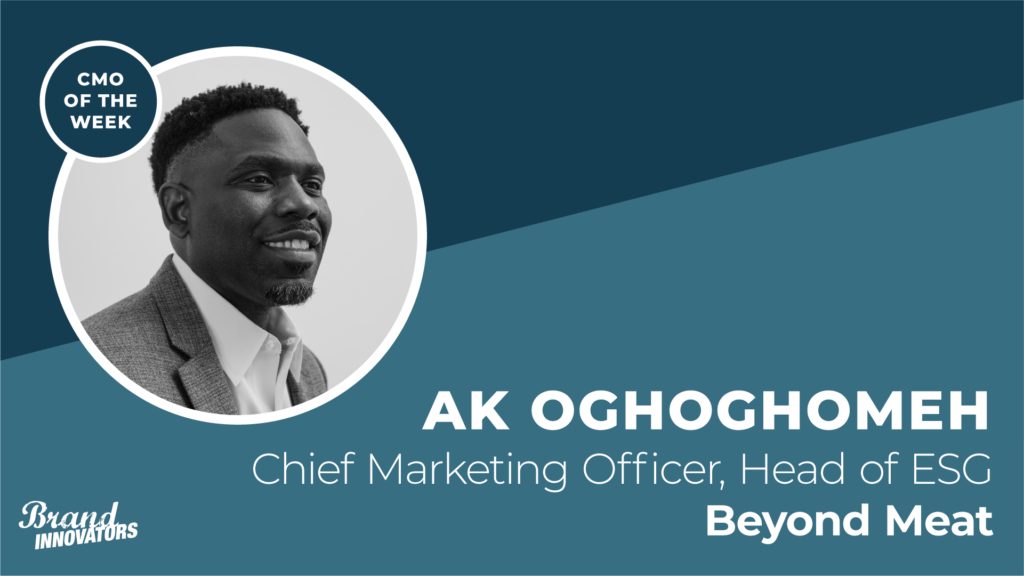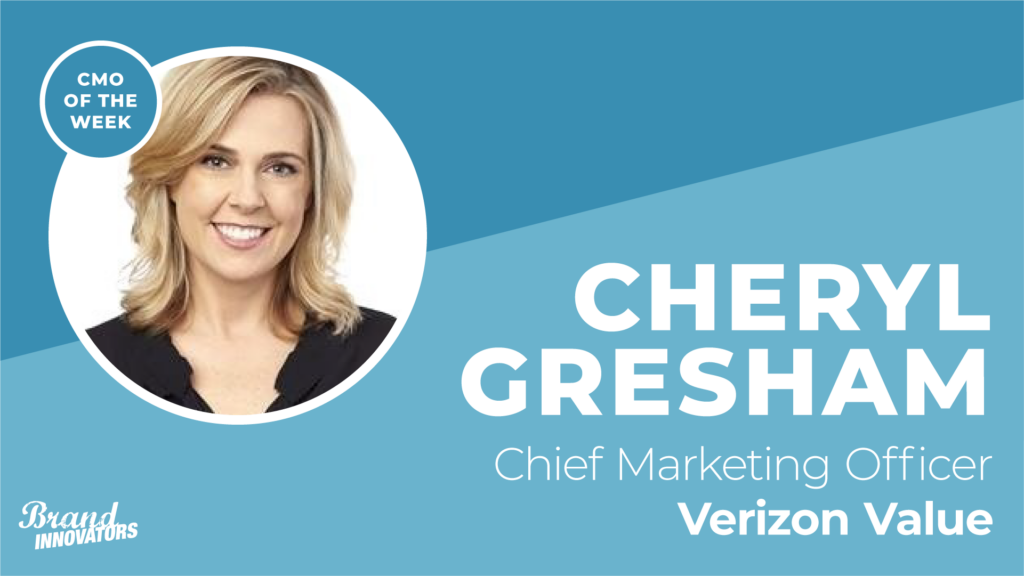It’s not quiet in the world of Qualcomm’s chief marketing officer Don McGuire. He finished 2022 with the launch of a major campaign starring Oscar hopeful Michelle Yeoh and is now hitting 2023 running with a big showing at CES.
In December, Qualcomm launched “The Edge of Possible” campaign, the first chapter in a multi-chapter effort to tell the story of how Qualcomm is enabling human progress through this idea of the “Connected Intelligent Edge.” This is Qualcomm’s first campaign targeted at business decision-makers and positions the company as an expert in AI. The brief had two objectives. First, to tell this audience that the company is an industry leader in device intelligence. The second objective was to humanize AI, to make it less scary.
“Instead of putting together some fancy CGI spot or going just with a voiceover and some visuals, we said, let’s get a real human,” explains McGuire. “We started looking at various personalities. We landed on Michelle Yeoh and it was almost like a light bulb went off in the room. We all just said, That’s it. She’s it. There’s a lot of parallels between Michelle and Qualcomm. We’ve both been around for a long time but we’re always diversifying and growing. We’re looking at ourselves with new perspectives and what we’re offering to the world is something new, through diversification and growth and expansion.”
Excited to return to CES for the first time since the pandemic, McGuire will be on the Brand Innovators CES Stage talking with Melissa Grady, CMO of Cadillac, about automotive innovation on Thursday January 5th. Qualcomm’s Snapdragon Digital Chassis solutions power smart driving experiences including driver’s assistance, vehicle infotainment and cloud connectivity to the manufacturer. This allows new opportunities for car brands to connect directly with consumers and build their CRM model directly.
“The relationship between the consumers and car companies has primarily been with the dealer for traditional auto brands,” explains McGuire. “That can change now with the software-defined vehicle, because Cadillac can have a direct relationship with their customer, offering new services and feature upgrades. The driver no longer has to know everything that they may want in a vehicle when they purchase it, because they’ll be able to upgrade it later, which is a whole new concept. Our platforms enable that to happen.”
Prior to joining Qualcomm in 2016, McGuire held senior roles at Intel, Cricket Communications and various mobile startups. Brand Innovators caught up with McGuire from his home office in San Diego to talk CES, Snapdragon and the parallels between Michelle Yeoh and Qualcomm. This interview has been edited for clarity and length.
What big trends do you expect to see at CES?
The whole digital transformation of the automotive business specifically around electrification and automation and driver’s assistance continue to be important trends and topics for the automotive industry. The auto brands continue to push themselves into this space pretty aggressively. GM is a perfect example of probably leading the pack around both autonomy and assistance, as well as for driver safety and for driver convenience. They are redefining the in-vehicle experience and how they are pushing electrification across their brands. Those topics will continue to be front and center at the show.
A lot of digital transformation is still on everybody’s minds. From a consumer electronics standpoint that means lots of areas, people are continuing to transform their home environments or their work from home environments. But with the demand signal being so crushed over the last six to eight months, especially in those consumer IoT categories. It’ll be interesting to see how brands talk about themselves at CES and what kind of things they highlight, knowing that there’s been such a down cycle for demand for those types of devices.
How are you thinking about augmented reality this year?
You’re starting to see augmented reality manifest itself in things like glasses such as Ray Bans Stories and Spectacles by Snap. There is a lot of experimentation here because it’s pretty early on. I don’t know if it’s 2023 or possibly 2024, where augmented reality will start to break out. That’s when you’re going to see more consumer use cases, growth and scale. Because it’s augmented reality built to scale, you still need low power, high performance computers with good battery life, to enable augmented experiences in smaller form factors. You can enable them on your phone or any on any display really by holding the camera up to the world around you. We announced our AR2 processor for AR glasses that enable augmentation of whatever they’re looking at. There is a real opportunity especially for augmented reality to start taking off. Of course, content is king. You have to have something for people to be interested in experiencing.
What about the metaverse?
There’s lots of opinions out there. There’s been positives and negatives. All we know is that you’re going to need technology to enable whatever type of extended reality experience you’re trying to produce for your audience, whether it’s an enterprise or a consumer thing. You’re not going to be able to produce ubiquitous augmented experiences on-the-go anytime, anywhere, unless you have that ubiquitous connectivity fabric like 5G, that’s the foundation.
On top of that you need hardware devices that can have low power, high performance computing like spatial computing. There will be more computer workloads between devices so maybe glasses onto the phone or off glasses into the car, whatever that might be. If you want to experience something in augmentation or in virtual, you need a device to get in. Chances are that Snapdragon is going to be powering those devices. We’re excited to go along for the ride and the journey to see where different thought leaders and companies take this idea of the metaverse and then how consumers adopt or don’t.
Can you talk about working with Michelle Yeoh?
Michelle is doing the same thing. She’s been around for a long time. Yet she’s now the It person in Hollywood at 60, which is particularly ageist towards women. But Michelle Yeoh is it. We really love that parallel. She’s also been involved in such amazing projects that are cutting edge. Everything Everywhere, All at Once at its core is a story about a mother and a daughter but it’s through the eyes and experience of the multiverse. She’s never been afraid of that. From Star Trek to Crouching Tiger, Hidden Dragon to even being a Bond sidekick, she’s always been in these really amazing predicaments and experiences that have a technology angle to them. She’s modern and we love her wit. We love her edge.
How will this campaign come to life?
When the agencies stitched together the footage, they came back to us and said we know this is going to manifest itself through media and :15 second spots by use case and product category, but we’ve put together a really nice short film. We took a look at it and we loved it. So we created a landing environment for the film. People are going to be exposed to it through these :15 and 30 second vignettes, whether it’s about AI in automotive, AI in smartphones and in the metaverse or an XR experience in remote work with your PC or smart cities and smart factories. Michelle is telling that story through all those different lenses. And then we cut it up and put it out.
The target audience is business decision makers. We have a really nice media suite including: The New York Times, The Wall Street Journal and CNBC. It’s all digital. We’ve got a landing environment that we created at qualcomm.com. Once you land there, you can either watch the entire film or go deeper into those use cases that drew you in. If you saw a :15 second or :30 spot with Michelle talking about AI in the context of automotive and you saw that on CNBC, then when you land you can get a dive deeper into our automotive AI story. It can lead you all the way down to lead generation, that’s how we’ve structured the campaign. We captured a lot of content so we think we can keep it pretty fresh. We’re going to look at the results over the next four to six weeks and then decide if we want to put more fuel on the fire.
Can you talk about how your past roles have helped shape your approach to your current role?
Intel did a fantastic job of building the Intel Inside phenomenon. They took an ingredient and they created a consumer brand out of it. They spent 25 years building Intel inside as something people should care about when they’re shopping for a PC. When you look at Snapdragon, there are parallels there. Snapdragon is something that sits inside of devices, you can’t go to the store and buy a Snapdragon. Did I pull from that experience in the development of our strategy around Snapdragon? Absolutely. It’s a different world. It’s a different era but some of those core principles I pulled from my days at Intel when I ran product marketing for the PC business.
I spent 13 years as a tech marketer on the mobile operator side. Then I jumped over to the device side and got some great experiences around how consumer electronics companies market devices. That’s very helpful in the context of Snapdragon, as well, understanding what’s in the mind of a Samsung or a Quest, a Meta or a BMW as it relates to their products. Then the role that Snapdragon plays in not being exclusionary or not trying to disrupt or detract from those brands telling their stories, but to really amplify and help enhance that storytelling process.
